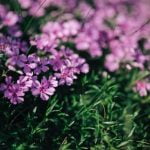Are you looking for planting ideas for borders in gardens? Borders play a crucial role in garden design, providing structure, definition, and visual interest. They can create a beautiful frame for your garden beds, pathways, or lawn areas. In this article, we will explore the importance of borders in garden design and provide tips and inspiration for creating stunning border displays.
When it comes to choosing plants for your borders, the options are endless. From colorful perennials to vibrant annuals, there are plenty of choices to suit your garden style and climate. We will discuss how to select the right plants for your borders and provide guidance on creating a cohesive color palette and plant combinations that will elevate the visual impact of your garden.
In addition to plant selection, we will also delve into designing borders for various garden styles, such as traditional, modern, cottage, and more. Whether you prefer a formal look with neatly trimmed hedges or a more relaxed feel with wildflowers and grasses, we have got you covered. So if you’re ready to transform your garden with beautiful borders, keep reading for practical tips and inspiration.
Choosing the Right Plants for Borders
When it comes to planning and planting ideas for borders in gardens, choosing the right plants is crucial for creating a successful and visually appealing border. Whether you are aiming for a traditional, modern, cottage, or any other garden style, selecting the appropriate plants will set the tone for your garden space.
Perennials vs. Annuals
One of the first decisions to make when choosing plants for borders is whether to incorporate perennials, annuals, or a mix of both. Perennials are a popular choice as they come back year after year, providing a sense of continuity and low maintenance. On the other hand, annuals offer a burst of color and are perfect for filling in gaps while waiting for perennials to establish themselves.
Consideration for Climate and Soil
It’s important to consider your local climate and soil conditions when selecting plants for your garden borders. Some plants thrive in specific climates or soil types, so be sure to research which options will work best in your area. Additionally, taking into account the amount of sunlight your border receives is essential for ensuring that your chosen plants will flourish.
Combining Plants for Visual Interest
Another key aspect when choosing plants for borders is considering how they will complement each other visually. Mixing different sizes, colors, and textures can create an eye-catching display that adds interest throughout the year. Be mindful of bloom times as well to ensure a continuous show of color from spring through fall.
By carefully considering these factors and doing thorough research, you can select the best plants for creating stunning borders in your garden that will thrive and provide visual appeal throughout the seasons.
Creating Colorful Borders
When it comes to planting ideas for borders in gardens, one of the most important factors to consider is creating colorful borders. The right combination of plants and colors can elevate the overall look of your garden and add visual interest. To create a vibrant border, it’s essential to select a color palette that complements the existing landscape and other elements of your garden design.
One tip for selecting a color palette for your border garden is to choose colors that create a cohesive and harmonious look. Consider the existing colors in your garden, such as the hues of your house, existing flowers, and foliage. You can opt for complementary colors to create a bold and eye-catching border or select analogous colors for a more subtle and calming effect.
In addition to choosing a color palette, selecting the right plant combinations is crucial for creating stunning borders in gardens. When choosing plants for your border, consider their blooming seasons, heights, and textures. By mixing different types of flowers and foliage, you can create depth and dimension in your borders while ensuring that there’s always something in bloom throughout the gardening season.
Another important aspect of creating colorful borders is understanding how different plant varieties work together. Some plants may compete for nutrients or grow at different rates, which can impact the overall appearance and maintenance of your border garden. Researching companion planting techniques can help you achieve a visually appealing and thriving border garden.
| Tip | Description |
|---|---|
| Consider Contrast | Pairing complementary colors or contrasting textures can make each plant stand out. |
| Plan for Year-Round Interest | Select plants with varying bloom times to ensure continuous color throughout the gardening season. |
| Use Foliage Wisely | Utilize plants with interesting foliage alongside blooming flowers for added visual appeal. |
Designing Borders for Various Garden Styles
When designing borders for gardens, it’s essential to consider the overall style of the garden. Traditional garden styles often feature symmetrical, formal borders with neatly clipped hedges and classic plant choices such as roses, peonies, and lavender. Modern garden styles, on the other hand, may prioritize clean lines and minimalist planting schemes, with bold architectural plants like ornamental grasses and succulents taking center stage.
Cottage gardens are known for their romantic, whimsical feel, and their borders often reflect this with a relaxed and abundant planting style. Mixing a variety of flowers and herbs in a more naturalistic way can create a charming cottage border. Other garden styles to consider include Mediterranean, tropical, xeriscape, and woodland gardens – each providing unique opportunities for creative border designs.
When choosing plants for traditional garden borders, consider classic favorites such as hydrangeas, boxwood hedges, and English ivy. For modern gardens, opt for sleek and architectural plants like agaves or ornamental grasses. In cottage gardens, embrace a more wild and relaxed approach with an array of colorful perennials such as coneflowers, black-eyed Susans, and foxgloves.
Whether you prefer the structure of traditional designs or the free-spiritedness of cottage gardening, there are endless opportunities to showcase your personal style through planting ideas for borders in gardens. By understanding the principles behind different garden styles and selecting suitable plants accordingly, you can create borders that perfectly complement and enhance your overall garden aesthetic.
Incorporating Texture and Height Into Border Designs
When it comes to creating stunning borders in gardens, incorporating texture and height into the design is essential for a visually appealing and dynamic landscape. By strategically layering plants with different heights and textures, gardeners can create a border that is not only beautiful but also provides interest throughout the year.
Strategic Plant Placement
To incorporate texture and height into border designs, it’s important to consider the placement of plants within the border. Taller plants should be positioned towards the back of the border, while shorter plants can be placed towards the front. This creates a natural-looking progression of height and ensures that every plant has its moment in the spotlight.
Adding Texture With Foliage
In addition to varying heights, incorporating different foliage textures can add depth and interest to border designs. Combining plants with large, bold leaves alongside those with delicate, fine foliage creates contrast and adds visual appeal. Consider using plants with interesting leaf shapes or variegated foliage for even more texture.
Seasonal Interest
When planning your border design, think about how each plant will contribute to the overall look throughout the seasons. Choosing plants that offer different textures and heights at various times of the year ensures that your border will have year-round appeal. For example, evergreen shrubs provide structure during winter months, while perennials and annuals add pops of color and texture during the growing season.
By carefully considering both texture and height when selecting and placing plants in your garden borders, you can create a dynamic and visually captivating landscape that adds interest to your outdoor space all year round. With thoughtful planning and careful consideration of plant selection, your garden borders can become a masterpiece of color, texture, and form.
Practical Considerations
When it comes to planting ideas for borders in gardens, it’s important to consider practical considerations such as maintenance, sunlight, and soil requirements. These factors can greatly impact the success and longevity of your border garden, so it’s crucial to choose plants that are well-suited to the specific conditions of your garden.
To ensure that your border garden thrives, start by assessing the maintenance needs of the plants you’re considering. Some plants may require regular pruning or deadheading, while others may be more low-maintenance. Make sure to select plants that align with the amount of time and effort you’re able to dedicate to garden upkeep.
In addition to maintenance considerations, sunlight and soil requirements play a significant role in the health of border plants. Take note of the amount of sunlight each area of your garden receives throughout the day, and choose plants that are compatible with those light levels. Similarly, assess the quality and drainage of your soil to select plants that will thrive in those conditions.
To help you make informed decisions about which plants are best for your borders based on these practical considerations, here are some suggestions:
- Low-maintenance options: Lavender, Russian sage, and ornamental grasses
- Sun-loving plants: Black-eyed Susans, coreopsis, and salvia
- Shade-tolerant varieties: Hostas, ferns, and astilbe
- Plants for well-draining soil: Sedum, yarrow, and verbena
- Choices for clay or moist soil: Daylilies, asters, and iris
By carefully considering maintenance needs, sunlight requirements, and soil preferences when selecting border plants for your garden design,you can enjoy a beautiful and thriving border garden for years to come.
Edging Options for Borders
When designing borders for gardens, selecting the right edging options can make a significant impact on the overall look and feel of the space. From defining the border to providing a clean and polished appearance, edging materials play a crucial role in creating visually appealing garden borders. There are various options to choose from, including stones, bricks, metal, wood, and even living hedges.
Stones are a popular choice for border edging due to their versatility and durability. They can provide a natural and rustic look to garden borders while adding a touch of elegance. Whether using large rocks for a bold statement or small pebbles for a more subtle effect, stone edging can complement a wide range of garden styles and plantings.
On the other hand, hedges offer a living and green alternative to traditional border edging materials. They can create a sense of privacy and enclosure while serving as a backdrop for other plants in the border. Hedges also have the added benefit of attracting wildlife and providing habitats for beneficial insects.
In addition to stones and hedges, there are countless other edging options to consider, each with its unique characteristics and advantages. Ultimately, the choice of edging material should align with the overall design vision for the garden border while considering practical factors such as maintenance requirements and budget constraints. By carefully selecting the right edging options, you can enhance the beauty and functionality of your garden borders while ensuring long-lasting appeal.
Ins and Outs of Companion Planting for Border Gardens
Companion planting is a popular gardening practice that involves planting different types of plants together in order to achieve certain benefits. When it comes to border gardens, companion planting can be particularly advantageous for a number of reasons.
One of the main benefits is pest control – certain plants can help to repel pests and attract beneficial insects, which can contribute to the overall health and vitality of the border garden. Additionally, companion planting can also improve pollination and yield, as well as provide support and structure for neighboring plants.
When selecting companion plants for your border garden, it’s important to consider the specific needs and characteristics of each plant. For example, some plants may have deep root systems that can help to break up compacted soil or draw up nutrients from lower levels, benefiting their neighboring plants. Other companion plants may release natural substances into the soil that deter harmful pests or suppress weed growth.
In terms of actual plant combinations, there are countless options to choose from depending on your garden’s design and aesthetic preferences. For instance, you might consider pairing tall flowers with sprawling groundcovers for a visually dynamic and space-efficient border design. Ultimately, the key is to select companion plants that not only look good together but also benefit each other in terms of nutrient uptake, pest control, and overall health.
| Border Garden Benefits | Companion Planting Options |
|---|---|
| Pest Control | Lavender and Rosemary |
| Improved Pollination | Zinnias and Bee Balm |
| Nutrient Uptake | Nasturtiums and Tomatoes |
Seasonal Interest
When planning a border garden, it’s essential to consider the seasonal interest of the plants you choose. By carefully selecting a variety of plants that bloom and thrive at different times of the year, you can ensure that your borders have year-round appeal. This means choosing a mix of perennials, annuals, and even some evergreen shrubs or grasses to create visual interest in every season.
For springtime interest, consider planting bulbs such as tulips, daffodils, and crocuses which will bring vibrant colors to your garden as it emerges from winter. As the seasons transition to summer, incorporate flowering perennials like coneflowers, daylilies, and hydrangeas for a burst of color. In the fall, ornamental grasses and asters can add texture and warmth to your borders as other plants begin to fade.
To ensure that your border garden maintains interest even in the winter months, consider incorporating evergreen shrubs or trees with interesting foliage or berries. This can provide structure and form to your garden when other plants are dormant. Additionally, hardscaping elements such as decorative planters or trellises can also add visual appeal during the colder months.
Incorporating seasonal interest into your border garden not only provides ongoing beauty throughout the year but also ensures that there is always something new and captivating to see each time you step outside. With thoughtful planning and plant selection, you can create a border garden that offers delight in every season.
Conclusion
In conclusion, planting ideas for borders in gardens opens up a world of creativity and expression, as well as the opportunity to enhance the overall beauty and structure of your garden. From choosing the right plants to incorporating color, texture, and height into your border designs, there are endless possibilities to create stunning and visually appealing garden borders.
The key is to take inspiration from various garden styles, consider practical maintenance needs, and plan for year-round interest by selecting a mix of plants with different blooming periods.
As you embark on your border garden journey, remember that there are numerous options for edging materials and companion planting combinations to further elevate the visual impact of your borders. Whether you prefer a traditional, modern, or cottage garden style, there are planting ideas that can suit your personal taste and vision for your outdoor space.
Take the time to research different plant varieties that thrive in your local climate and soil conditions, and don’t be afraid to experiment with new combinations of colors and textures.
Ultimately, creating beautiful borders in your garden is not only about aesthetics but also about fostering a thriving ecosystem filled with pollinators and beneficial insects. By carefully selecting plants that bloom at different times throughout the year, you can ensure that there is always something interesting happening in your garden borders.
Hopefully, this article has provided you with the inspiration and encouragement needed to get started on designing stunning borders that will become the highlight of your outdoor space. Happy gardening.
Frequently Asked Questions
What Is the Best Low Maintenance Edging?
The best low maintenance edging for your landscaping needs will depend on the style and function you desire. Some popular options include stone, metal, plastic, or concrete. Consider the look you want to achieve and choose a material that requires minimal upkeep.
How Do I Create a Low Maintenance Border?
To create a low maintenance border, start by selecting perennial plants and shrubs that require little care once established. Use mulch to suppress weeds and retain moisture, reducing the need for frequent watering and weeding. Lastly, consider installing landscape edging to define the border and prevent grass from encroaching.
How Do You Make a Border Look Good?
Making a border look good involves careful planning and design. Choose a variety of plants with different heights, textures, and colors to create visual interest. Group similar plants together for a cohesive look and consider incorporating decorative elements such as rocks or garden art. Regular maintenance like pruning and weeding will also help keep the border looking its best.

Welcome to my gardening blog! I am passionate about plants and enjoy sharing my knowledge and experiences with others. In this blog, I will write about everything related to gardening, from tips on how to get started to updates on my own garden projects.





